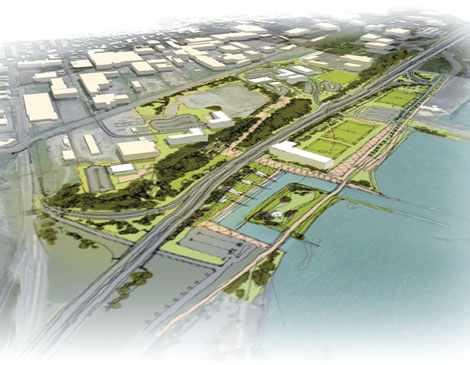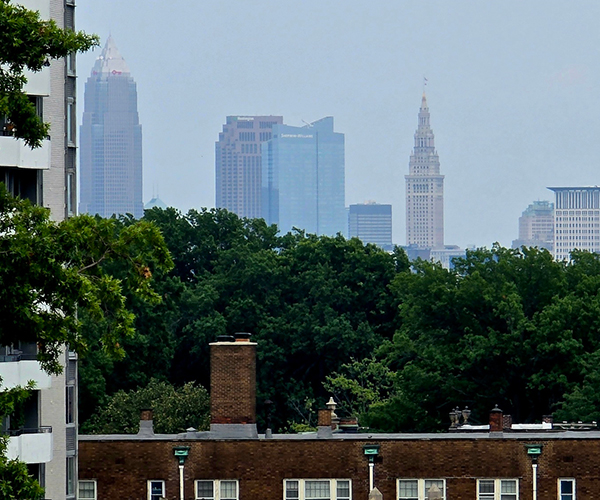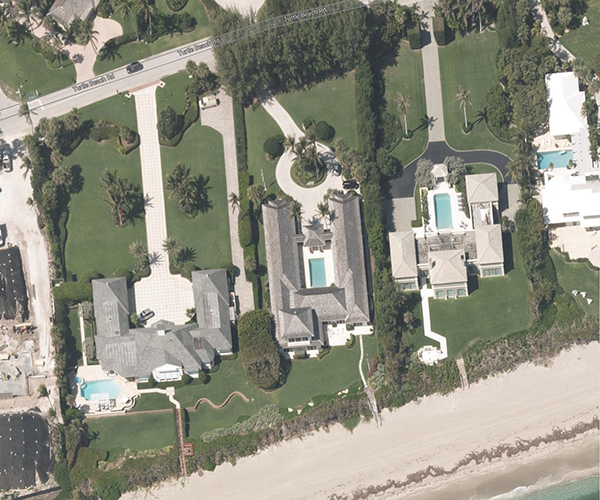Let’s call it potential energy. When the FirstEnergy Lake Shore power plant was demolished in February, it opened 54 acres of prime land for the first time in more than 100 years. But while the possibilities for parks, housing, retail and business development seem as expansive as Lake Erie, it’s barely a ripple right now.
The city hired New York-based architecture and urban planning firm CallisonRTKL late last year to oversee the planning with initial land reuse proposals submitted to the planning commission in May. Yet no timetable has been established for public comment or more detailed designs.
“We foresee a great and positive civic debate about how to unlock the potential of this site that will benefit generations of Clevelanders,” says Doug McCoach, a vice president at CallisonRTKL.
Here are three big questions as the project builds momentum.
FirstEnergy initially spent about $10 million to remove lead and asbestos on the property before demolition. But long industrial use does have additional cleanup requirements, especially for acreage used for housing.
In most cases, property transfer (from FirstEnergy to private real estate developers and/or the Cleveland Metroparks) requires the cleanup to be done by the seller, but federal and state requirements can be tweaked to move things forward.
“Different parts of the property have different cleanup issues,” says McCoach. “Those will have to be worked out with the various government agencies and private companies that might be involved.”
What about the freeway?
Interstate 90 cuts between the plant and the lake. A few of CallisonRTKL’s options have the freeway moved south by about 500 feet, allowing for a possible park. But the Green Ribbon Coalition, a group of lakefront development activists, wants the freeway moved about 500 yards south.
Rerouting it behind Gordon Park from roughly Martin Luther King Jr. Drive to East 55th Street would create about 250 acres of continuous parkland with a large beach east of the East 55th Street Marina.
“What we can create will be an East Side version of Edgewater Park,” says Dick Clough, executive board chair of the Green Ribbon Coalition, “with a beach used by the community and the economic benefits of real estate development on the bluffs that will be south of the relocated freeway.”
Where would the future development occur?
In addition to the 106-year-old plant site, land between St. Clair Avenue and that property would be the primary area for economic development — like the Battery Park development near Edgewater Park.
However, access roads would have to be built either above or below the railroad tracks. Three streets along that bluff south of the property would be used for new access and connections to the lakefront, according to the CallisonRTKL plans.
“There are all sorts of ways to increase the values of the neighborhoods directly south of the property,” McCoach says. “What the city wants to do is to find what reuse plans can bring the private marketplace into the process.”




